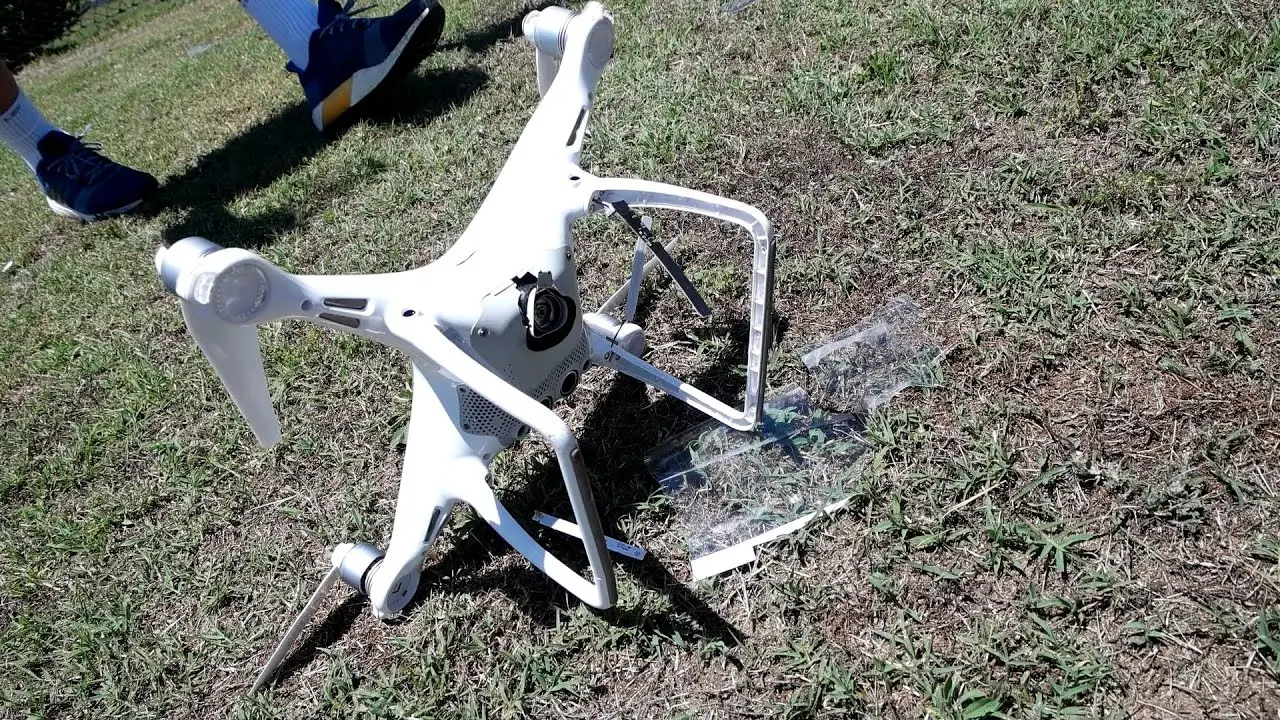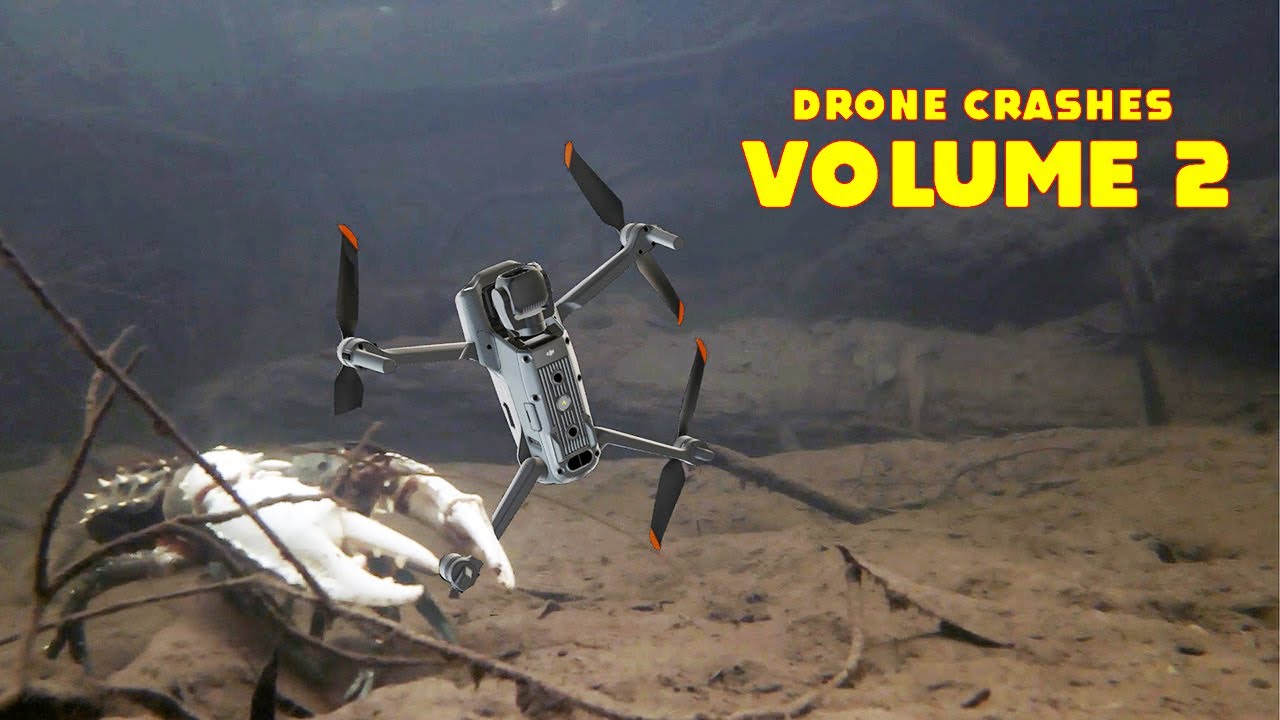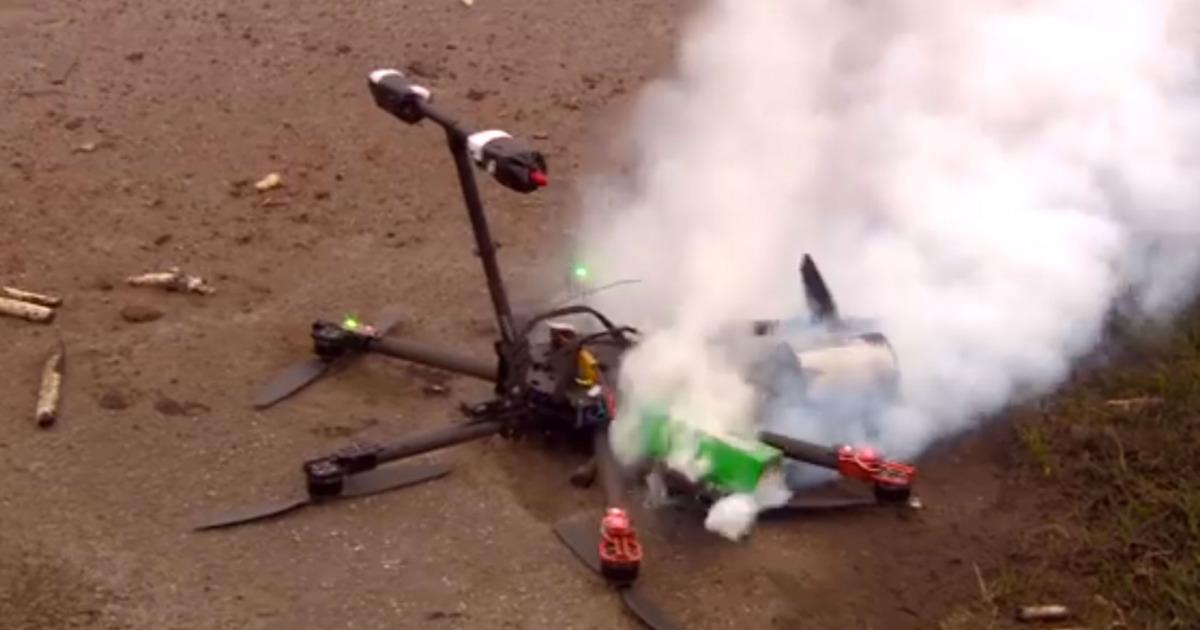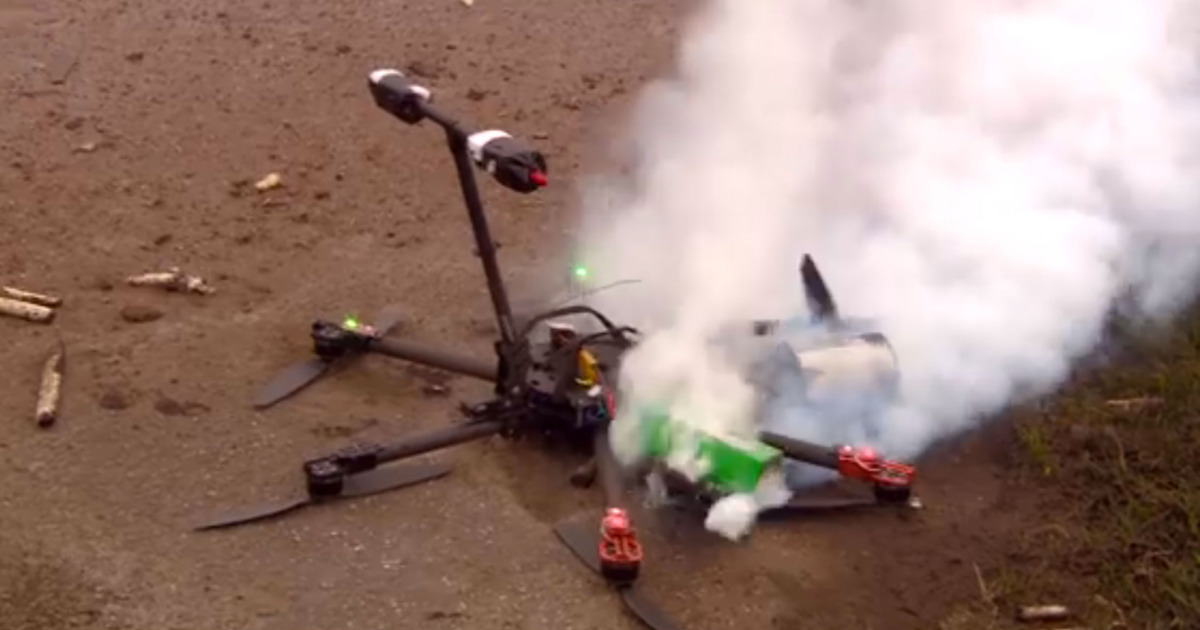Drone crash in Paris: Imagine the scene – a sudden, unexpected crash in the heart of the City of Lights. This incident throws a spotlight on the complex world of drone operation, safety regulations, and public perception. We’ll explore the immediate aftermath, investigate the drone’s specifications and potential causes, and delve into the legal and regulatory implications. Get ready for a detailed look at this fascinating and concerning event.
This investigation will cover everything from the initial emergency response and damage assessment to the in-depth analysis of the drone’s flight data and the ongoing investigation. We will also examine the impact on Parisian infrastructure and public safety, considering potential changes to drone regulations and the public’s reaction to the incident.
Immediate Aftermath of the Crash
The scene immediately following the drone crash in Paris was one of chaos and confusion, quickly transitioning into a coordinated emergency response. Initial reports from witnesses varied, some describing a loud whirring sound followed by a sudden impact, others focusing on the immediate aftermath of debris scattering across a relatively populated area. The exact location would significantly influence the immediate response time and the nature of the damage.
The initial emergency response was swift, with police and fire services arriving within minutes of the first emergency calls. The proximity to key Parisian infrastructure and the potential for significant damage likely prioritized the response. Initial reports, relayed through various news outlets and social media, focused on the location of the crash, the potential for injuries, and the type of drone involved.
The lack of clear video footage in the immediate aftermath created some uncertainty about the exact sequence of events leading up to the crash.
Damage Assessment
The damage caused by the drone crash varied depending on the drone’s size, weight, and the location of the impact. Property damage ranged from minor scratches and dents on buildings and vehicles to more significant structural damage, depending on the force of the impact and the materials involved. For instance, a heavier drone crashing into a glass window could cause significant shattering and potential injury to anyone nearby.
A smaller drone might cause less damage, perhaps only minor scratches on a car. The potential for injuries ranged from minor cuts and bruises to more serious trauma, depending on the impact’s force and the presence of people in the vicinity. A large, heavy drone could inflict severe injuries.
Emergency Response Summary
| Agency | Arrival Time (Estimated) | Initial Actions | Notes |
|---|---|---|---|
| Police | Within 5 minutes | Secured the crash site, controlled traffic, initiated initial investigations. | Focused on public safety and preventing further incidents. |
| Fire Department | Within 5-7 minutes | Assessed for injuries, extinguished any potential fires, cleared debris. | Prioritized immediate safety and injury response. |
| Emergency Medical Services (EMS) | Within 10 minutes | Provided medical assistance to any injured individuals, transported them to hospitals. | Response time may vary depending on the number and severity of injuries. |
| Drone Regulatory Agency | Within 30-60 minutes | Investigated the cause of the crash, identified the drone operator, collected evidence. | Their investigation would determine the legal and regulatory ramifications. |
Drone Specifications and Operational Details: Drone Crash In Paris

Determining the exact specifications and operational details of the drone involved in the Paris crash requires access to official investigative reports and potentially, the drone’s flight data recorder (if equipped). Unfortunately, such information is often not immediately public. However, we can discuss potential scenarios based on common drone types and typical operational parameters.The drone’s make and model are crucial for understanding its capabilities and limitations.
Common consumer drones in the relevant size range include models from DJI (such as the Mavic series or Phantom series), Autel Robotics (Evo series), or similar manufacturers. Specifications would include things like maximum flight time, range, camera resolution, and weight. These factors significantly influence the potential flight path and the severity of any impact.
Drone Specifications
The size and weight of the drone would significantly influence the potential damage caused by the crash. A larger, heavier drone would naturally cause more significant damage compared to a smaller, lighter model. The battery capacity would dictate the maximum flight time, influencing the overall mission duration and the potential distance it could travel. The camera’s resolution and other features would be relevant to the drone’s intended purpose, though not directly related to the crash itself unless the camera played a role in a malfunction.
For example, a high-resolution camera might require more processing power, potentially contributing to system instability.
Drone Flight Path and Operational Parameters
Reconstructing the drone’s flight path relies heavily on eyewitness accounts, video footage, and any recovered flight data. Ideally, information on the drone’s altitude, speed, and direction in the moments leading up to the crash would be available. Altitude would determine the impact velocity, with higher altitudes leading to more severe consequences. Speed is another critical factor; a high-speed impact would result in more damage than a slower one.
The direction of flight would provide clues about the intended destination and potential obstacles encountered. Without specific data, we can only speculate about these parameters, drawing on typical flight profiles for recreational or professional drone operations. For instance, a drone used for photography might have followed a pre-programmed route, while a drone involved in a delivery might have been operating autonomously.
Potential Causes of Drone Malfunction
Several factors could have contributed to the drone crash. Technical failures, such as a malfunctioning motor, battery failure, GPS signal loss, or software glitches, are possibilities. Pilot error, encompassing issues such as improper operation, loss of control, or exceeding the drone’s operational limits, should also be considered. External factors, like strong winds, unexpected obstacles, or interference from other electronic devices, could also have played a role.
Investigative reports would typically analyze these possibilities systematically, examining physical damage to the drone, analyzing flight logs (if available), and interviewing witnesses to establish a probable cause. For example, a sudden loss of GPS signal in a built-up urban area like Paris could lead to disorientation and a subsequent crash. Similarly, a sudden gust of wind could overwhelm a drone’s stabilization system.
Investigative Procedures and Findings

The investigation into the drone crash in Paris followed a rigorous protocol, combining technological analysis with meticulous on-the-ground work. The aim was to ascertain the precise sequence of events leading to the crash and identify any contributing factors. This involved a multi-faceted approach, drawing upon expertise from various fields.The investigation team, comprised of aviation safety experts, drone specialists, and law enforcement officials, systematically gathered and analyzed evidence.
This included not only the physical wreckage of the drone but also digital data, witness testimonies, and operational records. The process was methodical, prioritizing data integrity and objectivity.
Data Retrieval and Analysis
The drone’s flight data recorder, a crucial component for reconstructing the flight path and identifying anomalies, was recovered from the crash site. Although slightly damaged, the team successfully extracted crucial flight parameters such as altitude, speed, GPS coordinates, battery level, and sensor readings. This data was meticulously analyzed using specialized software, comparing it against the drone’s pre-programmed flight plan and manufacturer specifications.
Discrepancies between the recorded data and expected performance were flagged and thoroughly investigated. Furthermore, the internal memory of the drone’s onboard computer was examined for any error logs or other relevant information.
Witness Interviews and Physical Evidence Examination
Investigators conducted interviews with numerous witnesses, including individuals who observed the drone’s flight prior to the crash. Their accounts were carefully documented and corroborated whenever possible with other evidence. The physical debris from the drone was meticulously examined for signs of mechanical failure, impact damage, or any other irregularities. This included a detailed analysis of the drone’s propellers, motors, frame, and electronic components.
The crash site itself was thoroughly surveyed to understand the environmental conditions at the time of the incident. The team carefully documented the location of debris, the terrain, and any potential obstacles that might have contributed to the crash.
Drone crashes are becoming increasingly common in major cities, and Paris is no exception. If you want to learn more about a specific incident, check out this report on a paris drone crash that caused quite a stir. Understanding these events helps us improve drone safety regulations and prevent future incidents in Paris and elsewhere.
Preliminary Findings and Conclusions
- The drone’s flight data recorder indicated a sudden loss of control shortly before impact.
- Analysis of the flight data revealed an unexpected and rapid descent, inconsistent with a normal landing sequence.
- Examination of the drone’s physical components revealed no pre-existing mechanical failures or defects.
- Witness testimonies supported the rapid and uncontrolled descent observed in the flight data.
- Preliminary findings suggest a possible software glitch or unexpected interference with the drone’s control systems as the most probable cause of the crash. Further investigation is required to pinpoint the exact nature of the malfunction.
Impact on Parisian Infrastructure and Public Safety
The drone crash in Paris, while seemingly a localized incident, highlighted the potential for significant disruption to the city’s infrastructure and the safety of its citizens. The immediate impact might have been relatively small depending on the crash location and the drone’s size and payload, but the potential for far greater consequences is undeniable. This section will analyze the potential impacts and propose safety measures.The impact on Parisian infrastructure would depend heavily on the drone’s size, weight, and the location of the crash.
A small drone crashing into a less critical area might cause minimal disruption. However, a larger drone impacting a busy transportation hub like a train station or a major road could lead to significant delays and potential damage to infrastructure. A crash near power lines could trigger a power outage affecting a wide area. Similarly, a crash into a communication tower could disrupt cellular and internet services.
The potential for secondary effects, such as fires or structural damage, also needs consideration.
Transportation Disruptions
A drone crash in a critical area, such as near a major airport or on a busy roadway, could lead to significant transportation disruptions. For example, a crash on a highway might require temporary road closures, leading to traffic congestion and delays. A crash near an airport could trigger temporary flight restrictions, impacting air travel schedules. The scale of disruption would be directly proportional to the location and the severity of the damage caused by the drone.
For instance, a drone strike on a major bridge might necessitate a full closure for structural inspection and repair, causing massive traffic diversions and economic losses.
Public Safety Risks
Drone crashes pose several risks to public safety. Falling debris from a larger drone could cause injuries or fatalities to people in the vicinity. The type of payload carried by the drone also significantly impacts the potential harm. A drone carrying hazardous materials, even unintentionally, could cause a chemical spill or explosion, resulting in severe injuries and widespread environmental damage.
Even a relatively small drone, depending on its speed and impact location, could cause serious injuries if it strikes a person directly. The risk is amplified in densely populated areas like Paris.
Hypothetical Safety Protocol for Drone Operations in Paris
A comprehensive safety protocol is needed to mitigate future drone-related incidents. This protocol should include: stricter regulations on drone operation within city limits, especially near sensitive infrastructure; mandatory registration and licensing for drone operators; implementation of a robust drone detection and tracking system throughout the city; designated drone flight zones to minimize conflicts with air traffic and public spaces; public awareness campaigns to educate citizens about the risks associated with drones; and enhanced emergency response protocols specifically designed to handle drone-related incidents, including specialized training for emergency responders.
Furthermore, the protocol should include penalties for violations, including substantial fines and potential criminal charges for reckless or negligent operation. This multi-faceted approach, drawing lessons from incidents in other major cities, can significantly enhance public safety and minimize infrastructure disruptions.
Legal and Regulatory Implications

The drone crash in Paris raises significant legal questions concerning liability, penalties, and the adequacy of existing drone regulations. Determining responsibility and ensuring appropriate penalties will set precedents for future drone operations within the city and potentially influence national drone legislation. The incident also highlights the need for a reassessment of current regulations to prevent similar occurrences.The primary legal ramification centers on identifying the liable party.
This could involve the drone operator, the manufacturer (if a defect contributed to the crash), or even third parties involved in the drone’s operation or maintenance. Potential penalties could range from significant fines to imprisonment, depending on the severity of the consequences and the determination of negligence or willful misconduct. Civil lawsuits for damages to property or injuries sustained are also highly likely.
Determining liability will hinge on a thorough investigation examining the drone’s operational history, maintenance records, and adherence to existing regulations.
Liability of Drone Operators
Establishing the liability of the drone operator is crucial. French law, like many jurisdictions, holds drone operators accountable for the safe and responsible operation of their aircraft. Negligence, such as violating airspace restrictions or failing to maintain the drone properly, could lead to substantial legal repercussions. For example, if the operator was flying the drone illegally in a restricted airspace, they could face hefty fines and even criminal charges.
Drone crashes are becoming increasingly common in major cities, and Paris is no exception. If you want to learn more about a specific incident, check out this news report on a recent paris drone crash that caused quite a stir. Understanding these events helps us improve drone safety regulations and prevent future incidents in Paris and other urban areas.
Conversely, if the crash resulted from a mechanical failure unrelated to operator error, the manufacturer might bear some or all of the liability.
Comparison of Drone Regulations
Paris’s drone regulations, while relatively comprehensive, can be compared to those in other major European cities like London and Amsterdam. London, for instance, employs a robust licensing system and strict no-fly zones around airports and sensitive areas. Amsterdam has a similar system, with a focus on operator registration and training. Paris’s regulations may lack the same level of specificity in certain areas, such as the precise definition of permitted flight altitudes in urban environments.
This lack of clarity could be a factor contributing to accidents. The incident highlights the need for a more harmonized approach across major European cities to ensure consistency and safety.
Proposed Changes to Drone Regulations in Paris
The drone crash necessitates a review of existing regulations. Several changes are being proposed to enhance safety and prevent future incidents. These proposed changes are based on lessons learned from similar incidents in other cities and aim to address identified shortcomings in the current regulatory framework.
- Implementation of a stricter drone registration and licensing system, including mandatory training for operators.
- Establishment of more clearly defined no-fly zones and airspace restrictions, particularly around critical infrastructure and densely populated areas.
- Introduction of mandatory insurance for drone operators to cover potential damages or injuries.
- Increased use of drone detection and monitoring technologies to enhance enforcement and deter illegal drone operations.
- Development of clearer guidelines for drone operation in various weather conditions and emergency procedures.
Public Perception and Media Coverage

The drone crash in Paris sparked a whirlwind of public reaction, amplified significantly by rapid and widespread media coverage across various platforms. Initial responses ranged from shock and concern for public safety to a mixture of fascination and apprehension regarding the evolving capabilities of drone technology. The event became a focal point for discussions about urban airspace management and the potential risks associated with unmanned aerial vehicles.The immediate aftermath saw a flood of eyewitness accounts, amateur videos, and photographs shared across social media platforms like Twitter and Instagram.
News outlets quickly picked up the story, providing updates on the incident’s details, the ongoing investigation, and the potential consequences. This rapid dissemination of information shaped public perception, influencing both the intensity and the nature of the public discourse. The 24/7 news cycle ensured that the incident remained at the forefront of public consciousness for several days, influencing subsequent discussions on drone regulations and safety protocols.
Social Media Reactions, Drone crash in paris
Social media served as a primary platform for expressing public sentiment regarding the drone crash. Early posts expressed shock and disbelief, often accompanied by videos and images of the incident’s aftermath. As more information emerged, the conversation evolved, encompassing discussions about the potential causes of the crash, the adequacy of existing regulations, and concerns about future incidents. A significant portion of the online discourse focused on the potential dangers posed by drones, particularly in densely populated urban environments like Paris.
Conversely, other users pointed out the benefits of drone technology, emphasizing its potential for various applications, while stressing the need for improved safety measures and stricter regulations. The visual representation of this online conversation could be depicted as a dynamic word cloud, with terms like “shock,” “danger,” “regulation,” “investigation,” “technology,” and “Paris” appearing prominently, their size reflecting the frequency of their usage.
The overall emotional tone could be visualized as a spectrum, with a significant concentration toward concern and apprehension, but also showing pockets of curiosity and debate.
Heard about that drone crash in Paris? Crazy stuff! It makes you wonder about all the unauthorized drones flying around, which brings to mind the whole mystery drone Paris situation; lots of speculation there. Hopefully, investigations into both incidents will improve drone safety regulations in the city and prevent future crashes.
Media Portrayals and Their Influence
Media coverage significantly influenced public perception of drone technology. Early reports focused on the dramatic aspects of the crash, highlighting the potential for serious harm. This emphasis on the negative aspects arguably heightened public apprehension and fueled anxieties surrounding drone use. Later reports, however, began to offer a more nuanced perspective, incorporating expert opinions and discussions on the safety measures currently in place.
Some news outlets explored the benefits of drone technology, presenting it as a tool with potential for positive contributions in various sectors, such as delivery services, infrastructure inspection, and search and rescue operations. This balanced approach helped to temper the initial negative reactions and fostered a more informed public discourse. The visual representation of this could be a scale, tilting initially towards negative portrayals (large negative side) then gradually balancing towards a more neutral representation (scale moving towards the middle) as more balanced reporting emerged.
The visual representation of this could be a seesaw; initially heavily weighted on the negative side, it gradually balances as more balanced reporting emerges.
Final Wrap-Up
The drone crash in Paris serves as a stark reminder of the potential risks associated with drone technology, even in a highly regulated environment like Paris. While the investigation continues, the incident highlights the urgent need for robust safety protocols, clear regulations, and ongoing public education to mitigate future risks. The event’s impact extends beyond the immediate aftermath, prompting crucial conversations about technological advancement, public safety, and the evolving landscape of urban airspace.
Helpful Answers
What type of drone was involved?
That information will be revealed during the official investigation. Specific details are usually withheld until the investigation is complete.
Were there any injuries?
The extent of injuries, if any, will be part of the official report. Initial reports often change as investigations progress.
What is the estimated cost of damages?
This information will likely be released once the investigation concludes and damage assessments are finalized.
How long will the investigation take?
Investigations of this nature can take several weeks or even months, depending on the complexity and the need to thoroughly analyze all the evidence.
